Behold our FTC disclosure masterpiece here. The following article was last updated on Aug 13, 2024 ...
All in One Auxiliary Power
No sport touring motorcycle is complete without an auxiliary power hub. It's a right of passage, a calling card and mark of the beast all rolled into one. In tribute to all that is "more", we just can't help ourselves. That next bike won't truly be ours until we decline a name brand interface before cutting right into our motorcycle wiring (and warranty) with fervor. Screw the bank!
“Say goodbye to proprietary circuitry and hello to DIY enhancements with this 20-amp, relay-triggered auxiliary power hub.”
With the advent of new tech, in this case an all-in-one, relay-triggered auxiliary power hub by Electop, the benefits are both a blessing and curse. The good rests in its ease of installation and use while the (not so) bad is that I'll be completely revamping one of TRO's more popular writeups. Que sera.
If you're not a wrencher but do own a "seemingly complex" sport touring bike (lookin' at you, Beemer), you might scoff from your dealership's service department lounge to learn of my disdain for company badged 12-volt enhancements. Like many, I'm one of those riders who sees no reason to tell my bike's ECU what I'm up to. As far as I'm concerned, that's between me and my battery, with some room for negotiation about my stator/regulator/rectifier demands in ransom.
All of this makes Electop's product a conniving, sneaky, manipulative little backhanded compliment to the promise of featureless, base model motorcycle purchases (complete with one or two entertainingly negative reviews). Next time, when the sales rep asks if I want the heated grips, ESA, GPS and juice master while emphasizing the proprietary circuitry, my answer will be "pass". Reason: they're all on the DIY list thanks to tidy little bastard conduits like this.
To properly introduce Electop's, say it with me ...
"12V Fuse Block, Universal 20A Motorcycle Automotive Fuse Block Fuse and Relay Box Kit with 4 Circuits Low Profile Mini Blade Fuse Holder, Battery Fuse Box Terminal Block for 12 Volt Vehicles"
... as heard in the lyrics of countless folks songs, let's consider the obvious features.
Electop Auxiliary Power Hub Features and Specs
It's simple to install, boasting only three wires that play nicely with Wago connectors. The power delivery maxes out at a plentiful 20 amps, more than enough for my needs including heated gear. LED indicators keep us from having to pull the lid, plus every individual fuse, only to find out we left the ignition turned off.
Two pre-soldered battery fork connectors and a smaller bare wire relay trigger are jacketed together with more than enough length. I remember it being roughly three feet but after measuring through my placement path, I promptly cut that down to a more efficient six inches. Don't cut yet! (we'll get to that)
Under the hood, which takes minimal pinch-and-lift finagling to release, we've got four blade fuse inserts and pre-positioned low profile fuses. The fuses are generically mediocre and lack a top label. A side order of variety amperage replacements makes keeping track of things that much easier.
Tongling's 20 AMP/12.5 VAC/14 VDC JOC-T78-DC12V-C capacitor-zister-lator doles out the good stuff to our fixed-position, screw-type wire nuts. With a sensitive feel for what constitutes snug, the screw nuts offer plenty of tensile strength. Once again, investing in a precision screwdriver kit proves its worth as these are deep-well, miniscule and possibly JIS or as is typical in my garage, were JIS, now JIS-ish.
I stand by my recommendation to order top labelled, low profile fuses from a reputable manufacturer for easier replacement but this next little perk certainly keeps us better informed. With the cover clicked back into place, there's an LED over every fuse. Blue means all is good whereas red tells you exactly which fuse is blown.
Before we dive into installation, let's look at the itemized connection options they include. Again, the direct-to-battery forks are ready at unboxing but they also allow for 18 AWG round terminals (bullet) along with inline taps which, by the way, somebody really needs to decide on an industry wide name for. Double sided foam tape and zip ties are provided.
Auxiliary Power Hub Installation
In preparation to fire up the 'ol flux capacitor, we'll first need a pair of #2 reading glasses, taped onto multiple jeweler's loupes, glued to a pair of binoculars and paired via bluetooth with an anastigmat telescope (anything James Webb caliber will do).
Now you can read the instruction manual.
In every direction, the actual module dimensions are less than 1" x 2" x 4". Positioning on my BMW R1200RS meant exploring a few options. On Maggie Dean's 2016 Striple, however only one location would do, not because there aren't multiple options but because one location, centered directly below the passenger seat, has a cast imprint that it fits into like a puzzle piece.
For your own effort, take a little time to position the product in a variety of ways, checking for hazards and clearance along the way. This geometric assessment will insure you don't run into trouble or, dare I say, run short on wire. There's no return from the fiasco that is measuring once and cutting thrice.
As for my signature approach to any step-by-step:
- Unboxing
- Discarding
- Strategizing
- Oops-checking
- Trigger-picking
- Wire-braiding
- Route-practicing
- Slack-adding
- Wire-chopping
- Jacket-splicing
- Destination-checking
- Wire-trimming
- Fuse-swapping
- Ground-connecting
- Positive-connecting
- Trigger-connecting
- Zeus-awakening
Our more elaborate, fully detailed instructions can be found here.
If you make it through all of the above, then all that's left to do is pop open the hub again and for every electronic toy you wish to add, cut/splice its source wire and feed its copper into the +/- fixed position wire nuts before securing. In the case of Electop's product, this is where you want to really perfect your feel for what's too tight (don't) versus too loose (no biggie). With continued thoughtful organization, you'll have every enhancement sparked up in no time.
Auxiliary Power Hub Challenges and Solutions
Somewhere toward the beginning of this article I mentioned humorous negative reviews. In all honesty, there's never been a product made to order in the history of civilization that didn't land one or two nopeskies. The trolls don't always get it wrong and in this case, that's to our advantage as consumers.
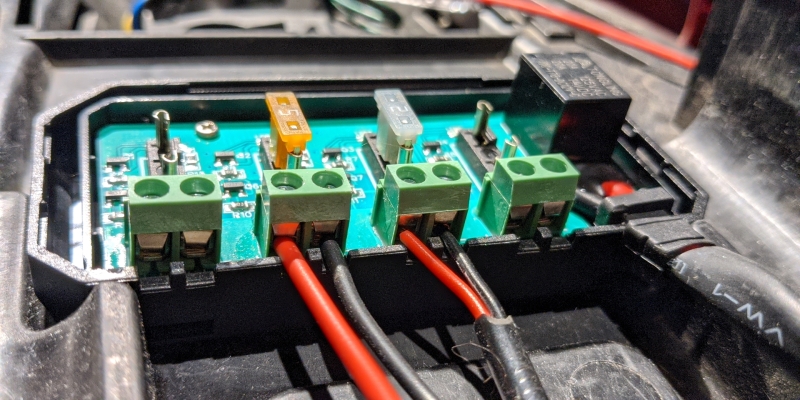
The most regularly cited problems for Electop's auxiliary power hub stem from the fuse holders proving brittle at the circuit board connection. Having read this before my own initial purchase, I made a note to be gentle with my fuse install process. A little finesse goes a long way and for the price, I'll suggest I got more than I paid for. All is well.
As for the fixed position wire nuts, my single-digit childhood years as a lemonade stand bicycle mechanic came with self-taught "tighter is gooder" logic. Nobody, and I mean nobody, could strip threads or sheer bolts better than mini-me. So many tears.
Just ... feed the line in as far as medium pressure will allow, then twist that jewelry driver until you feel things get a bit resistant. Another quarter turn, maaaybe a half and you're likely riding the lightning just fine.
Outside of the auxiliary power hub installation, the only obstacles one might trip over come in the form of switch placement. All those fun "sometimes" modifications: heated grips, GoPro remotes and phone chargers might not need to be active every ride. If we opt for switches at the handlebar, we best remember that bolt-on automotive switch plates are an entire isle unto themselves at any auto parts store.
Performance and Testing
If you're looking for ten dollar phrasing about "testing methodology", you're reading the wrong article. I merely went out and rode my motorcycle the way I do: full of coffee and angst. It took six years and a hundred thousand miles to get my BMW's original suspension detuned for this moment and, after multiple viciously curvaceous out 'n' backs, I hereby deem Electop's auxiliary power hub worthy.
Again, it's sturdy and reliable enough that I bought a second for our Triumph. Shaken like 4x speed earthquake footage, the LEDs remain lit, the fuses secure and the wiring connected, fully intact. This auxiliary power port performs flawlessly.
Part of these gleaming observations may be rooted in having scoured dissatisfied customer commentary. I'm not sure I would've gotten the same results using my fists and a ball peen hammer before coasting my beloved machine into a brick wall. Like any circuit based install, ya gotta be gentle.
There's also the possibility that one in three units self destruct upon arrival. I wouldn't know. I mean, it did arrive on the slow boat which suggests the manufacturer's logo could be a pair of crossed fingers. Having ordered two and successfully installed both, I doubt it. I'm confident enough in Electop's reliability that I've bookmarked the product for future purchase.
Wrapping It All Up
Ease of installation, better than necessary performance and dedicated reliability are things we as sport touring enthusiasts demand in coffee makers; I mean auxiliary power hubs. On a scale of -12 volts to realizing I have my battery leads backwards, I'll give it a shocking 12.6 ~ 13.5 in cold cranking quality. Anyone who's ever arced on accident knows that's pretty damn good.
Durability is where things come into question. Fidgeting about the hamster maze that is wire routing only to wake up in the middle of the night screaming "I'm gentler than any negative review!" is par for the Electop course. Is it durable enough for vigorous curve carving? Absolutely ... once installed. But looking back on the procedure grimace-free means wearing kid gloves.
Weighed against comparable products, my overall assessment is that (a) it's totally worth the expense, (d) I'd buy it again before most alternatives and (11) such products are only getting better. If you're as comfortable with low voltage electrical work as I am with you shredding your bike's warranty, this auxiliary power hub is for you. Just don't use a pneumatic press to secure it in place while the VHB cures.
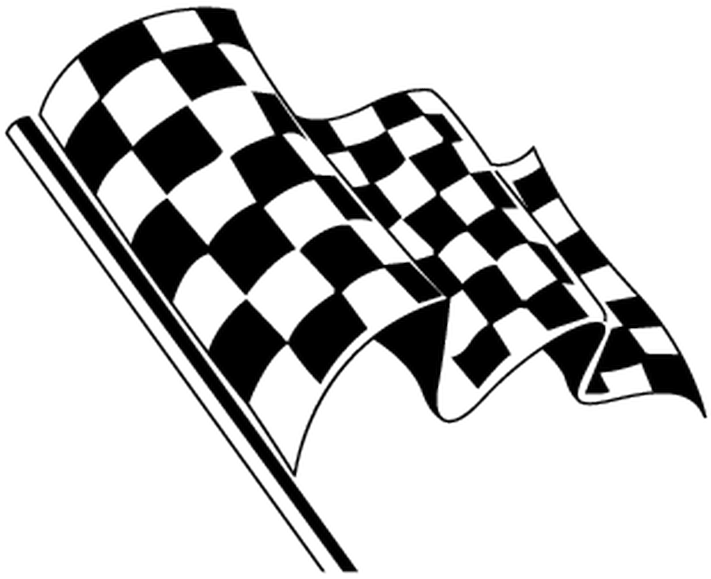
What Auxiliary Power Hub Do You Use?
There are other great gadget powering resources on the market. Which ones do you like and why? Your input is invited. Leave a comment and/or write an article!
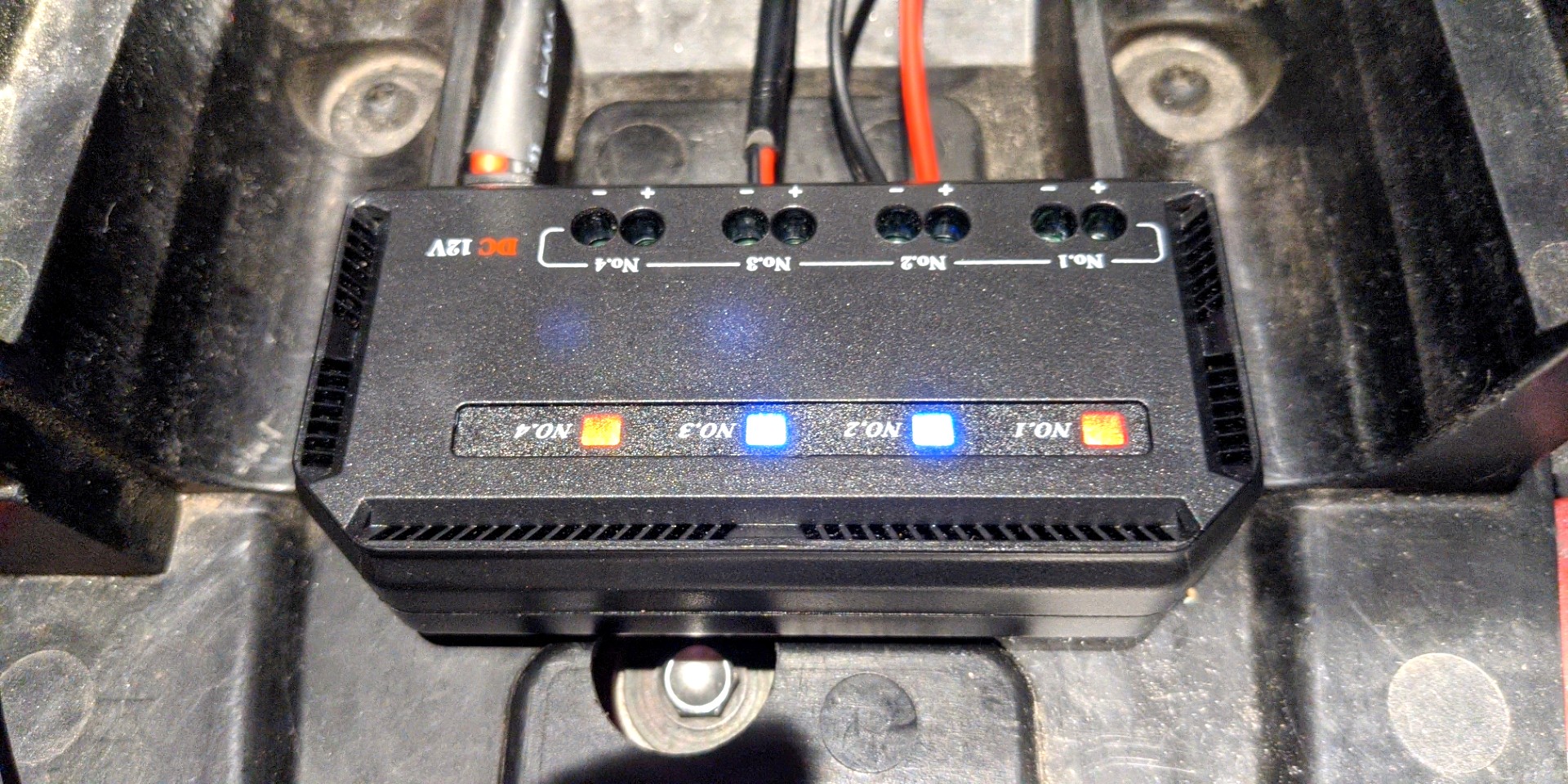
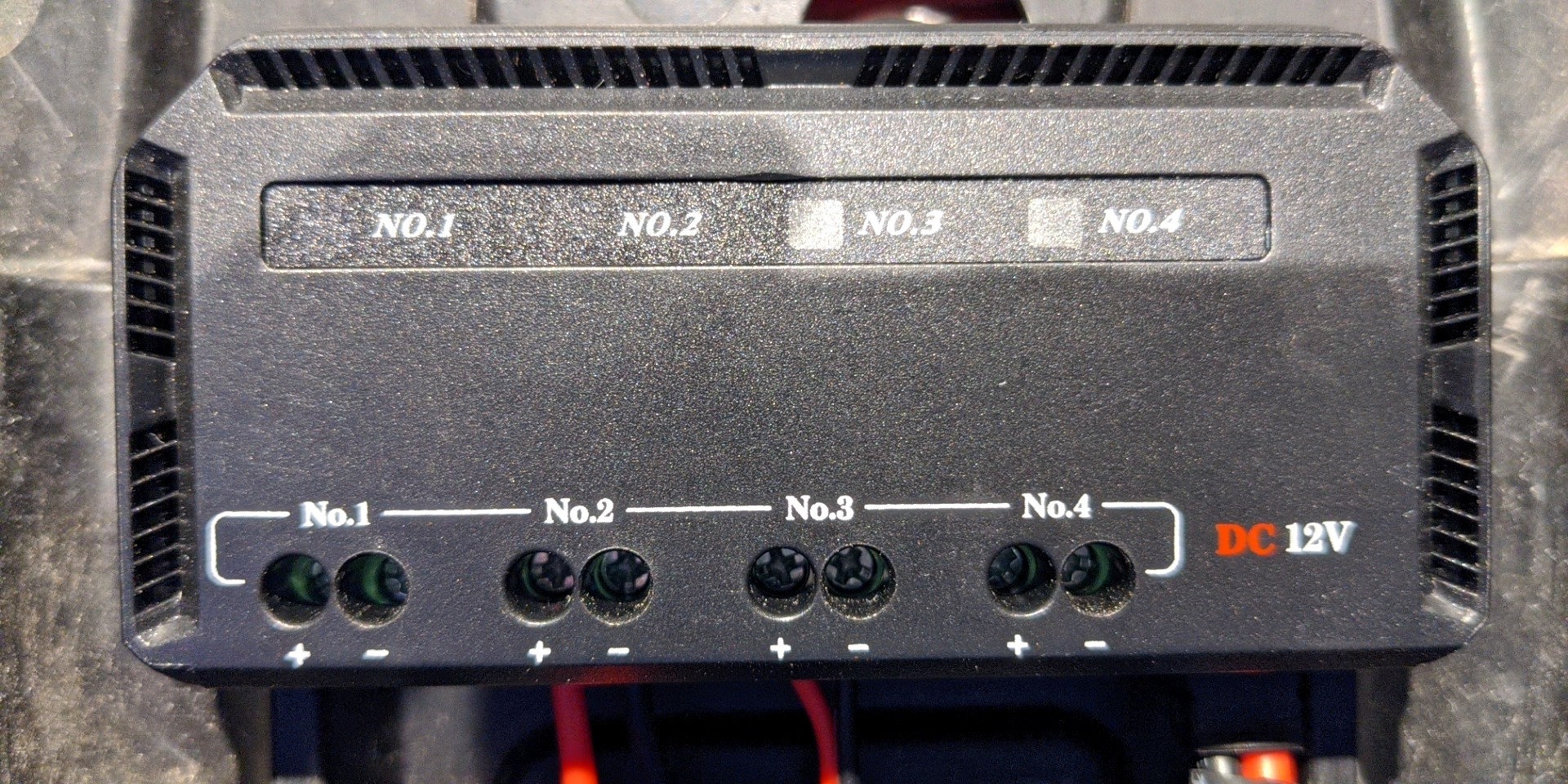
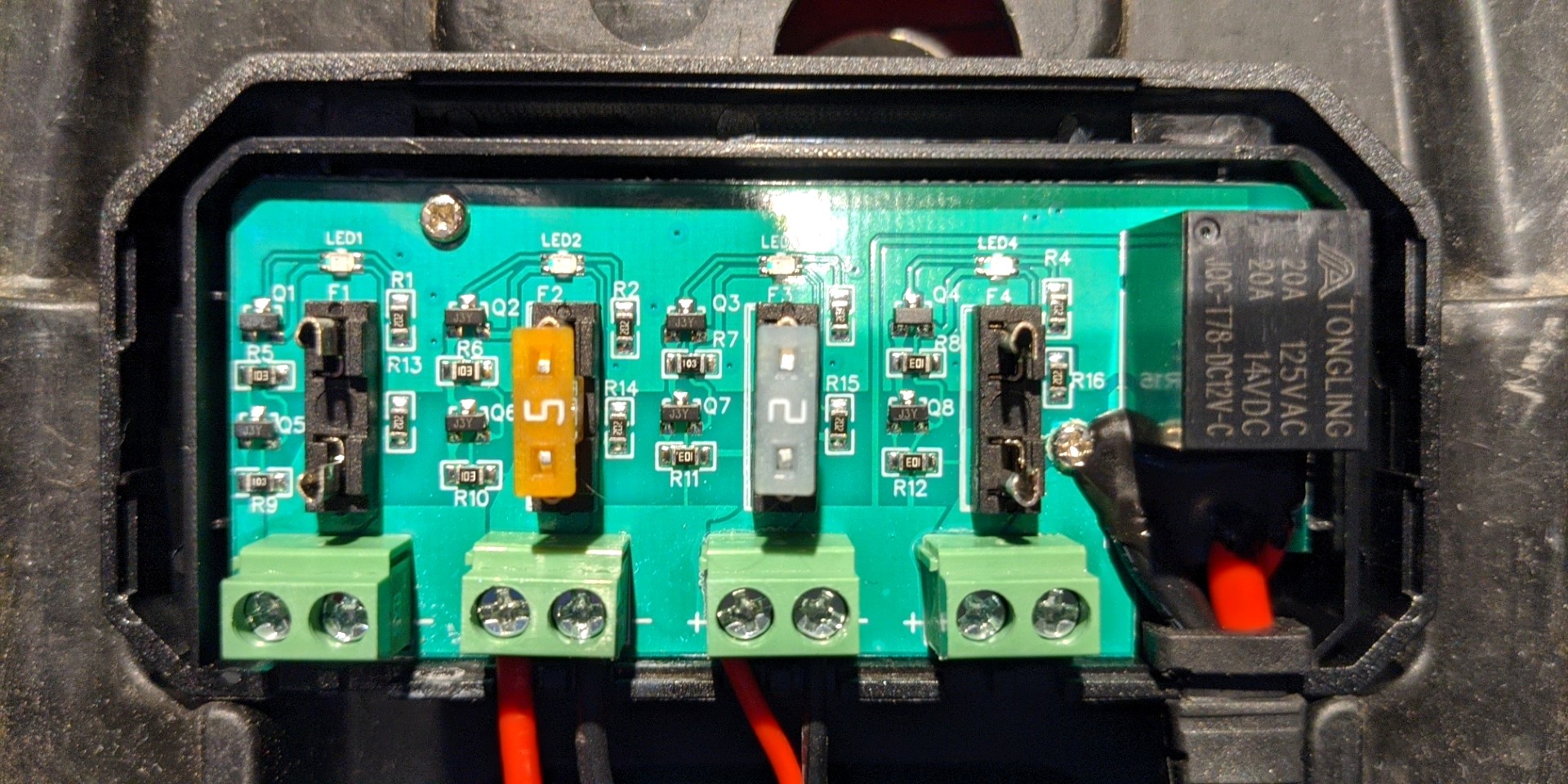
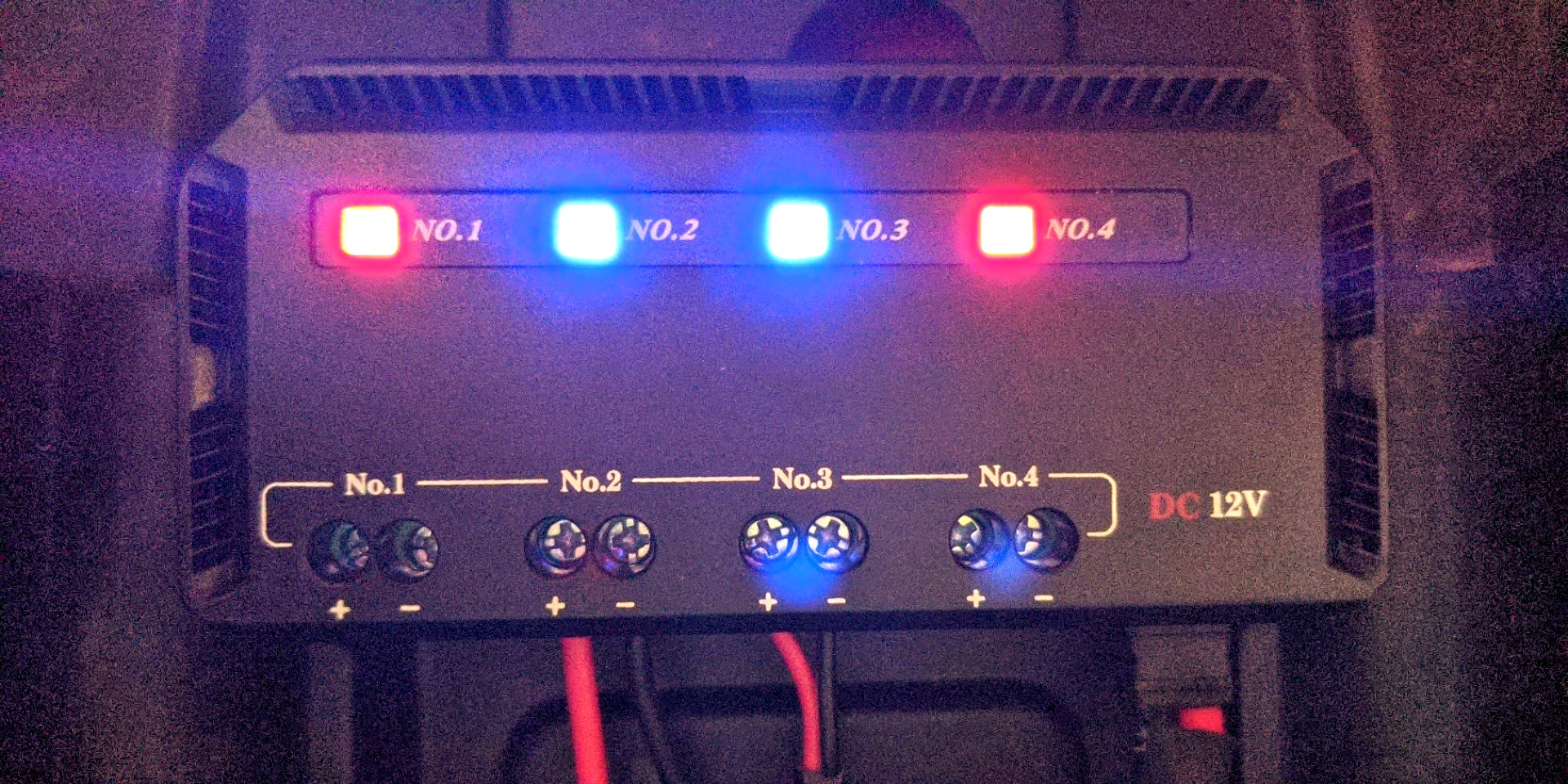
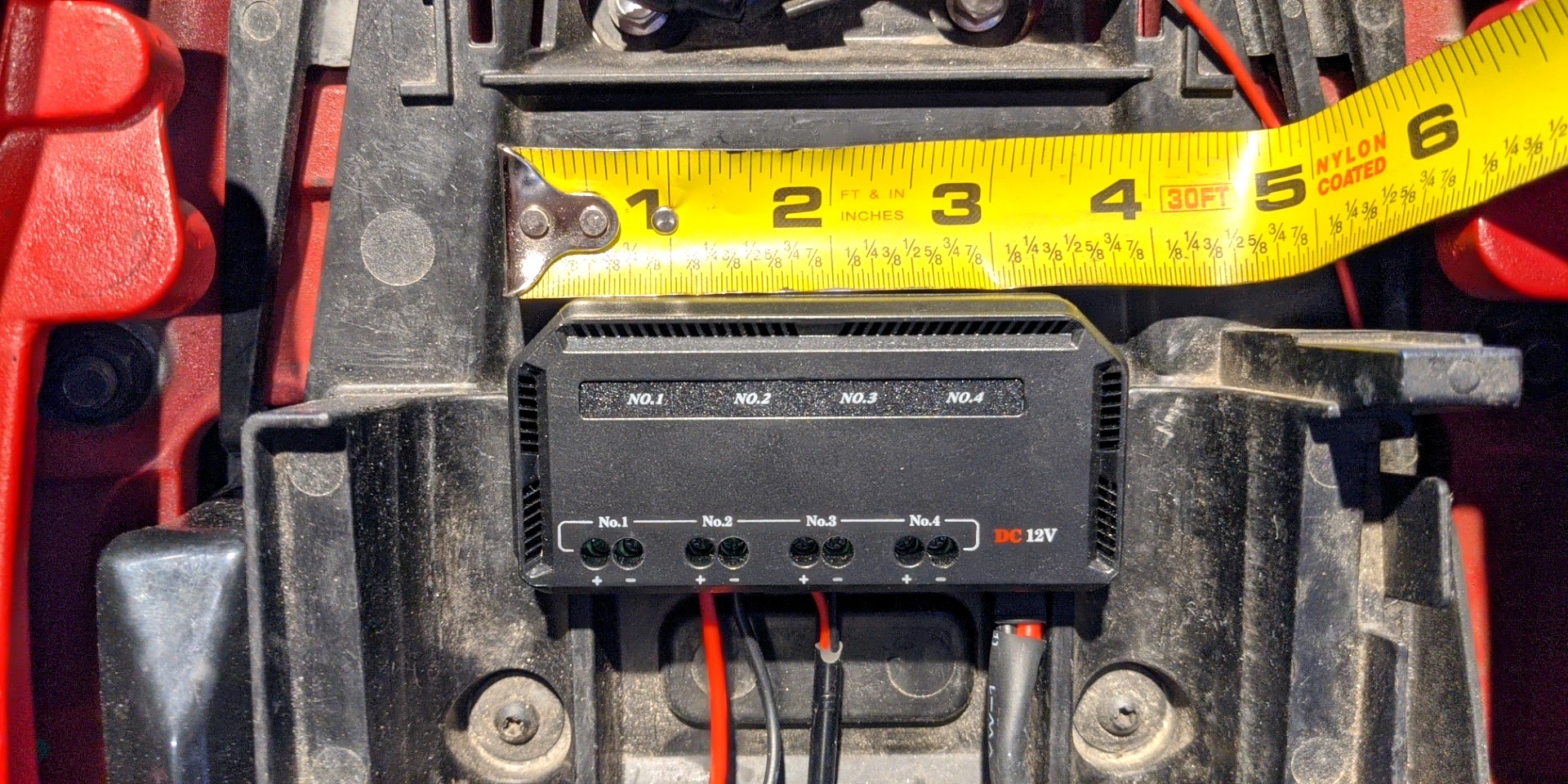
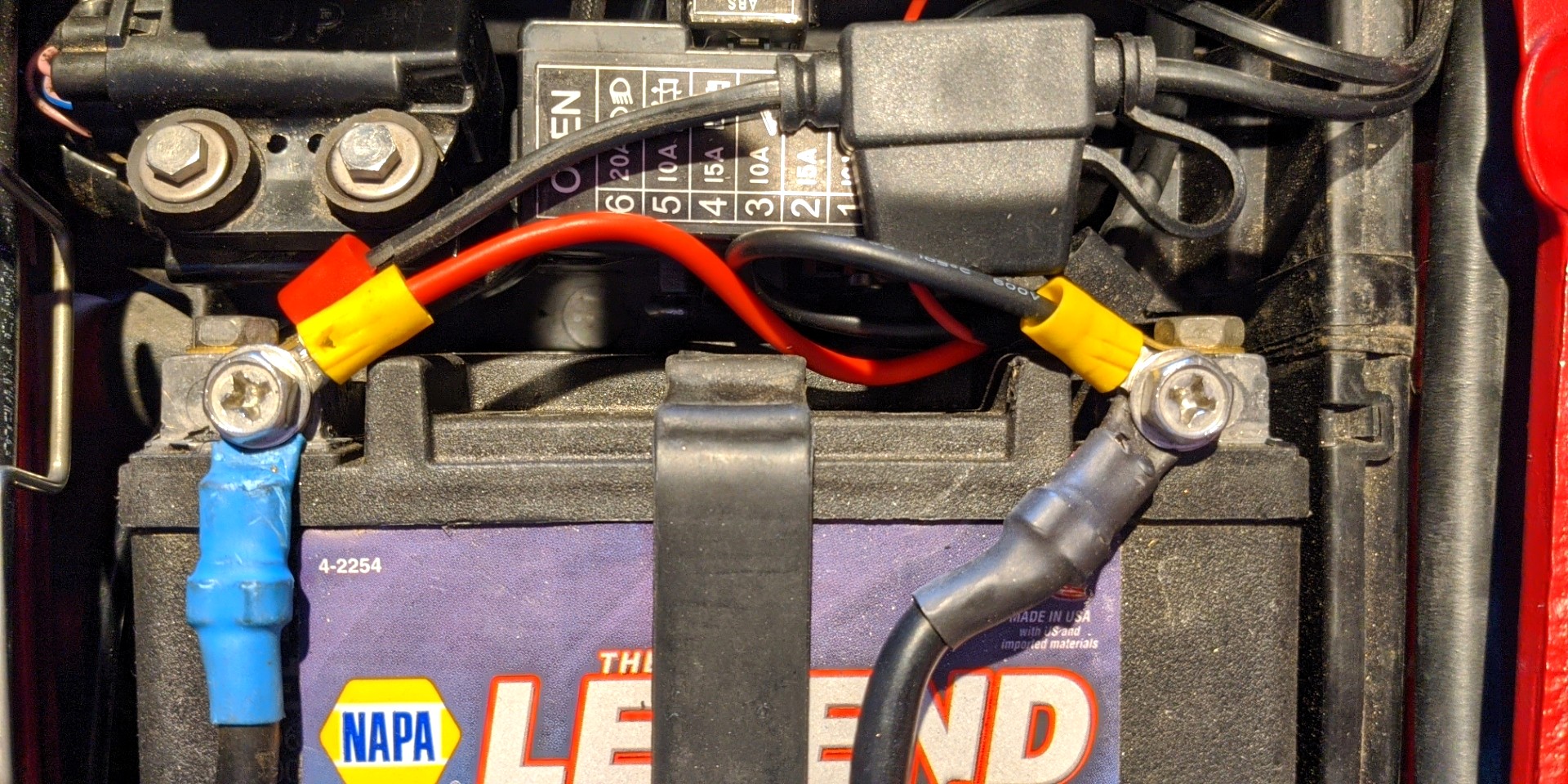
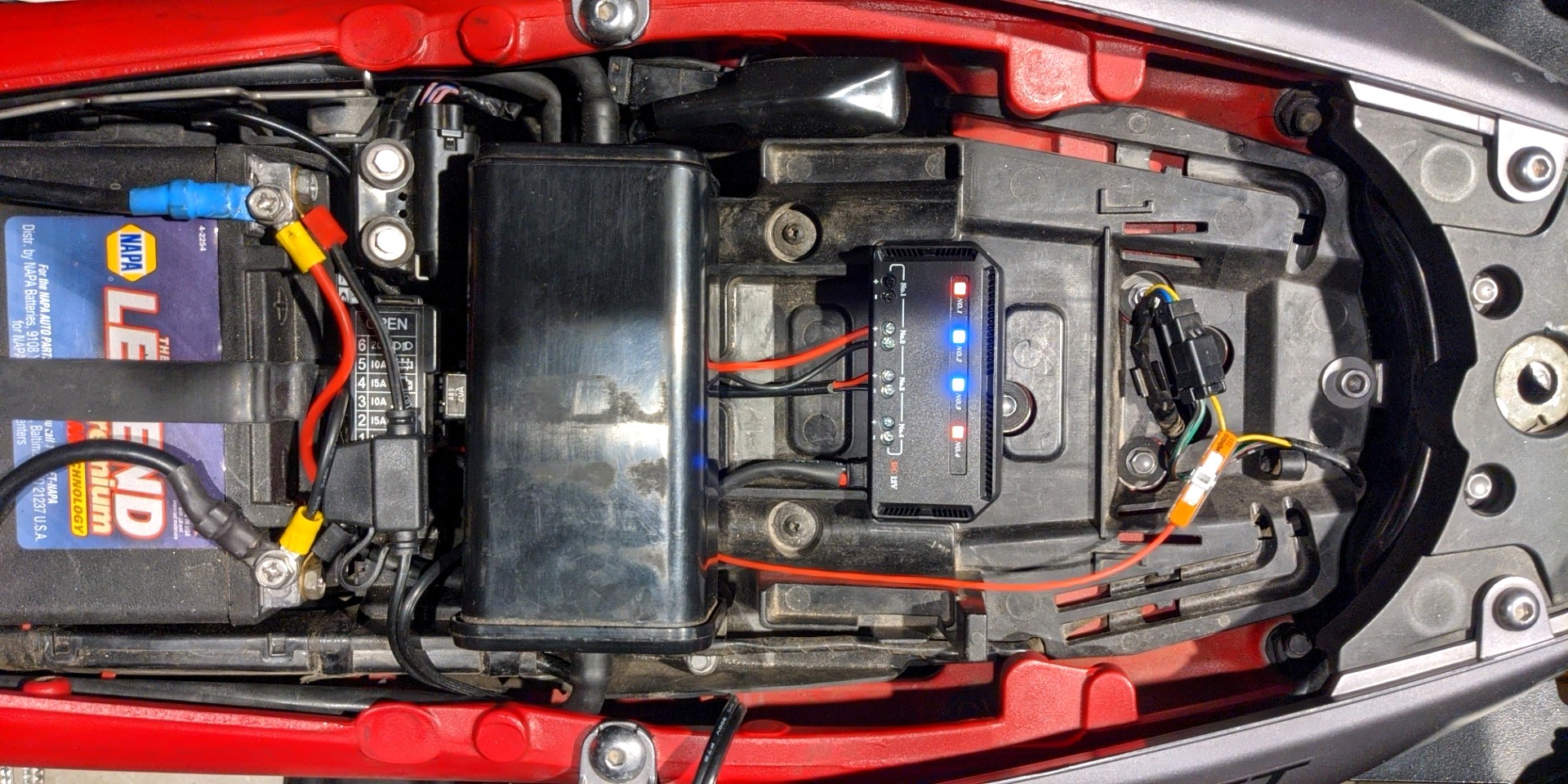



Thoughts gone wild? Write an article!